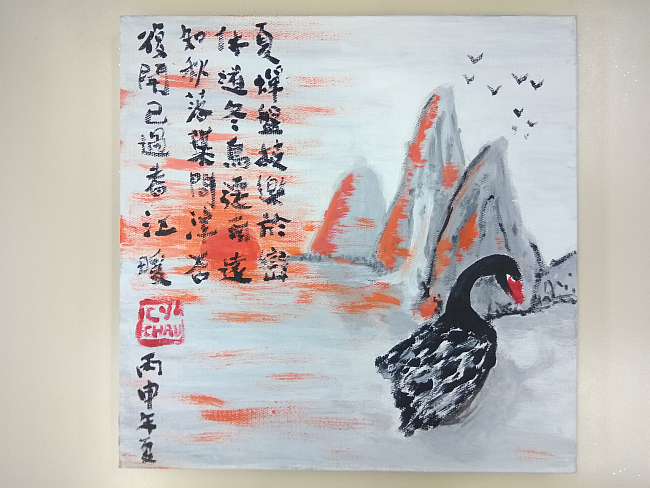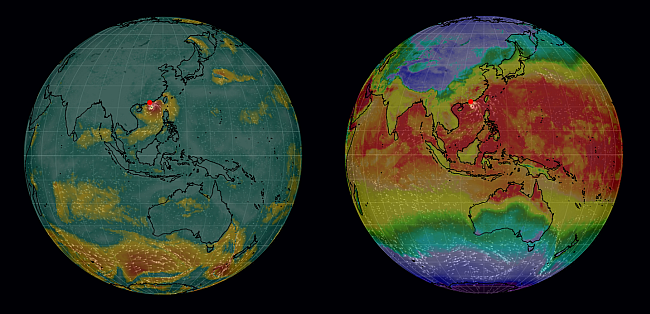Meteorologist x Artist
Meteorologist x Artist
CHAU Chun-yuen
September 2018
Elements of weather can be part of an artistic creation in daily life.
I have written a seven-word ancient poem visualising scenes from the four seasons in a painting (see Figure 1).
The poem is translated as follows: In summer, cicadas live happily on tree branches in the mountain. In winter, the migratory birds resting along the paths still have a long journey south. Would anyone bother the first leaf falling in autumn? It is not until the spring river water is no longer warm again when the lapse of one year is realised. The poem suggests that everything on Earth has its distinct wonderful moments, while the gone days are hard to be noticed.

Figure 1: A Chinese landscape painting by the author using western pigments
Have you ever imagined that artistic sense can also be incorporated into meteorological services?
I have been working in the Observatory’s Forecast Systems Division for several years, while the gone days are also hard to be noticed. My work includes managing systems to generate tropical cyclone tracks and receive global computer model data. The raw data are processed to produce different types of charts for consumption by the public and the forecasting office. Some techniques in the use of colours in painting can be utilised, for example the use of cold and warm colours. Warm colours are used to represent high temperatures or high-impact weather while cold colours are used to represent low temperatures or relatively stable weather (see Figure 2). Colour contrast can be used to represent information with opposite natures, such as the convergence and divergence of airflow, while colour gradient can be adopted to reveal changes of coherent information, etc. With this technique, hard scientific information can be presented in a clear manner.

Figure 2: Wind speed (left) and temperature (right) forecast products from a computer model. Warm colours highlighting high winds (left), warm and cold colours representing high and low temperatures respectively (right)
One of the basic techniques in weather analysis is to learn how to draw weather charts. When there are insufficient observations, our excellent imaginative power in the right brain is essential to complete the task. As there is a certain degree of uncertainty in weather evolution, and the accuracy of computer model forecast generally decreases with longer forecast time, how to consistently provide accurate forecasts becomes one of the biggest challenges to forecasters. With the ever-changing weather, understanding the pulse and rhythms of weather changes caused by the alternating ridges and troughs, is not only a science but also an art.
The public may think that weather forecasting is a pure science, but meteorological experts may say that it is a perfect fusion of science and art. I think much better results can be achieved by a good integration of one own skills.